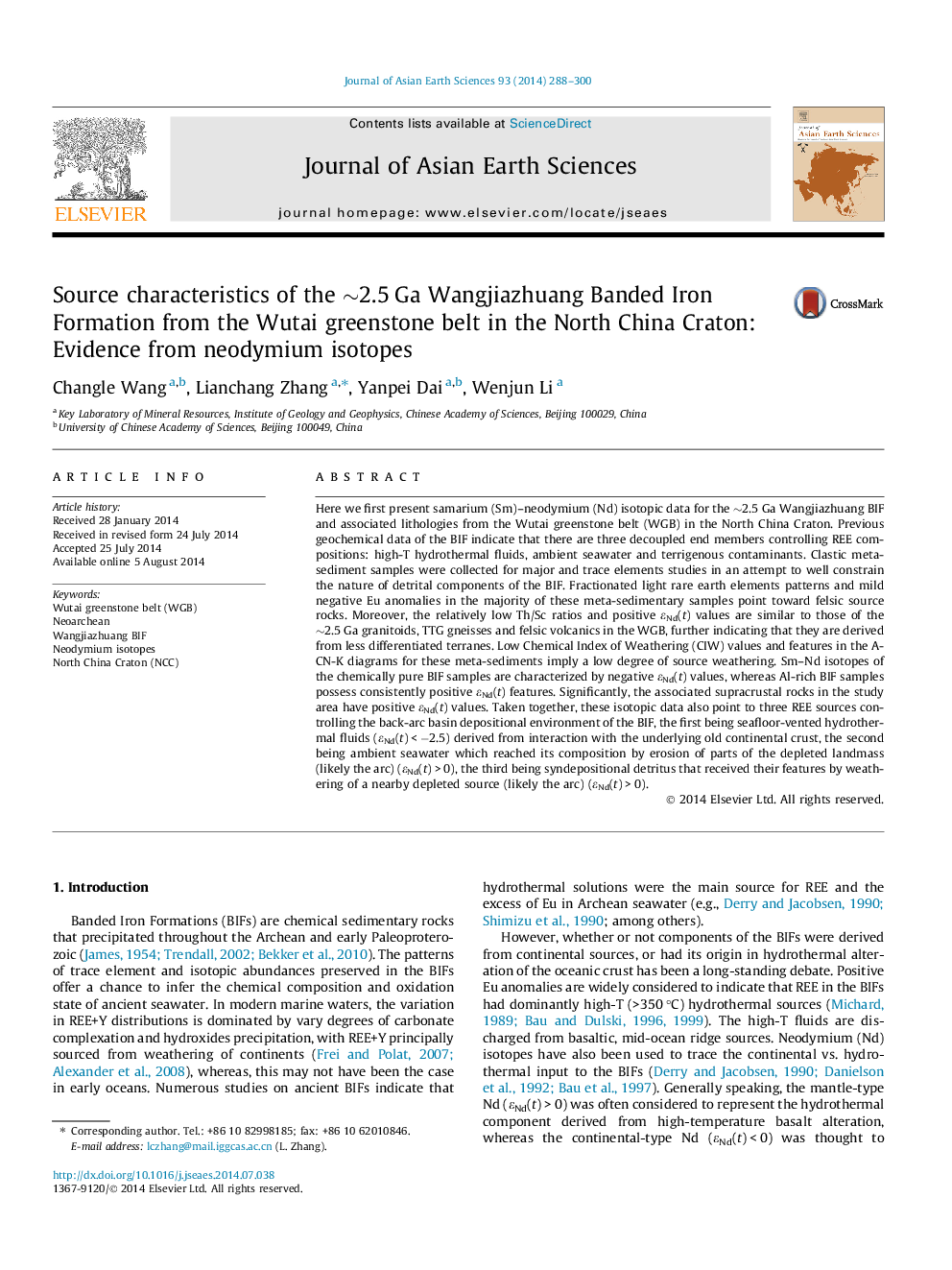| Article ID | Journal | Published Year | Pages | File Type |
|---|---|---|---|---|
| 4730735 | Journal of Asian Earth Sciences | 2014 | 13 Pages |
•First Sm–Nd isotopic study on the BIF in the North China Craton.•Terrigenous input derived from a felsic and depleted source.•Negative εNd(t) values sourced from the underlying old continental crust.•Positive εNd(t) values sourced from adjacent continental arc.
Here we first present samarium (Sm)–neodymium (Nd) isotopic data for the ∼2.5 Ga Wangjiazhuang BIF and associated lithologies from the Wutai greenstone belt (WGB) in the North China Craton. Previous geochemical data of the BIF indicate that there are three decoupled end members controlling REE compositions: high-T hydrothermal fluids, ambient seawater and terrigenous contaminants. Clastic meta-sediment samples were collected for major and trace elements studies in an attempt to well constrain the nature of detrital components of the BIF. Fractionated light rare earth elements patterns and mild negative Eu anomalies in the majority of these meta-sedimentary samples point toward felsic source rocks. Moreover, the relatively low Th/Sc ratios and positive εNd(t) values are similar to those of the ∼2.5 Ga granitoids, TTG gneisses and felsic volcanics in the WGB, further indicating that they are derived from less differentiated terranes. Low Chemical Index of Weathering (CIW) values and features in the A-CN-K diagrams for these meta-sediments imply a low degree of source weathering. Sm–Nd isotopes of the chemically pure BIF samples are characterized by negative εNd(t) values, whereas Al-rich BIF samples possess consistently positive εNd(t) features. Significantly, the associated supracrustal rocks in the study area have positive εNd(t) values. Taken together, these isotopic data also point to three REE sources controlling the back-arc basin depositional environment of the BIF, the first being seafloor-vented hydrothermal fluids (εNd(t) < −2.5) derived from interaction with the underlying old continental crust, the second being ambient seawater which reached its composition by erosion of parts of the depleted landmass (likely the arc) (εNd(t) > 0), the third being syndepositional detritus that received their features by weathering of a nearby depleted source (likely the arc) (εNd(t) > 0).
Graphical abstractFigure optionsDownload full-size imageDownload as PowerPoint slide
